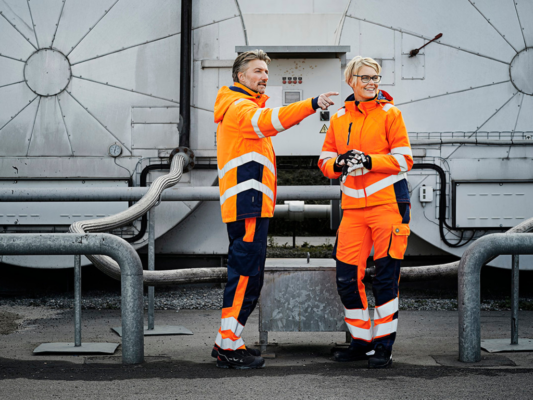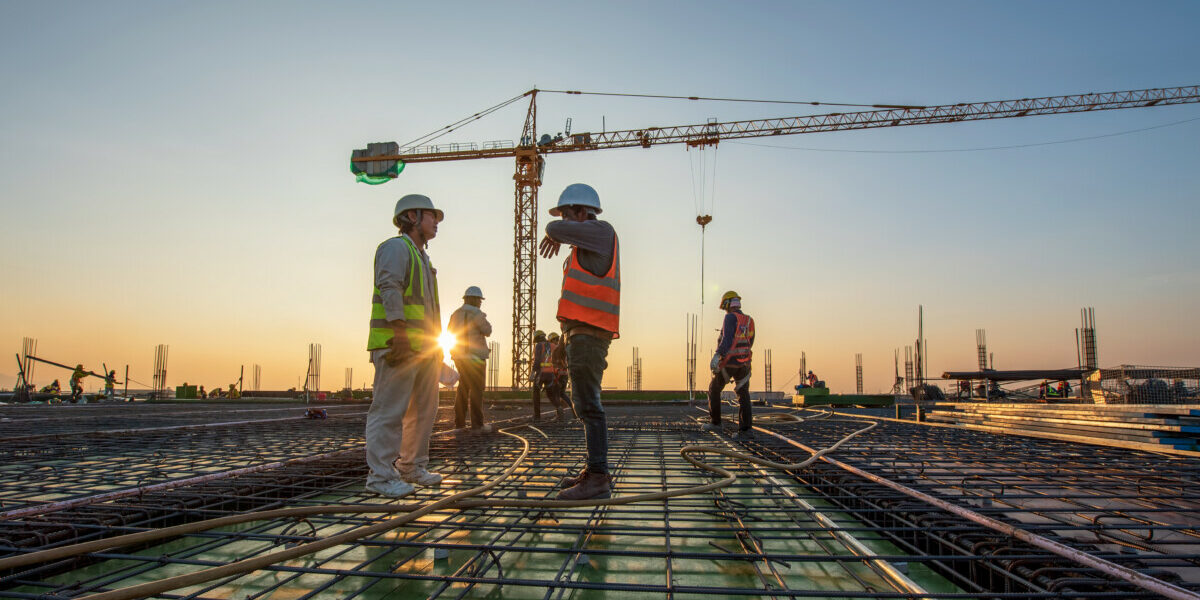No products in the basket.
Clad News, Ear Protection, Eye Protection, Head Protection, Health & Safety, High Visibility Clothing, PPE, Respiratory Protection, Safety Gloves, Workwear
How To Avoid the Dangers of Inadequate PPE
PPE refers to personal protective equipment, which includes helmets, goggles, gloves, and other protective gear. It is the last line of defence for workers, designed to provide a barrier between the worker and potential hazards in the workplace and prevent injury or illness.
Unfortunately, however, PPE varies in quality, performance and reliability. Uncertified or ill-fitting PPE can pose significant dangers to the wearer and compromise their safety. Read on to learn how you can protect yourself and ensure your PPE is doing its job.
Ensure your PPE fits correctly
Incorrectly worn PPE can pose serious risks to the individual and those around them. One common mistake is not wearing PPE that is correctly fitted to the individual’s body. For example, wearing a loose-fitting face mask that leaves gaps between the mask and the face can allow harmful particles to enter and compromise the protection of the wearer.
Wearing gloves that are too big or too small can diminish their effectiveness, as they will hinder your dexterity and may not provide a proper barrier against hazardous materials. Similarly, failing to securely fasten a hard hat or safety goggles can render them ineffective in protecting the wearer from head injuries or eye hazards. Even wearing your hood up underneath a helmet can render the helmet useless. To solve this, a thermal helmet liner can be worn instead.
To ensure your PPE fits correctly, it is important to carefully follow the manufacturer’s instructions and guidelines. These instructions often provide specific details on how to properly adjust and secure the equipment to ensure optimal protection. When it comes to gloves, refer to the sizing chart provided by the manufacturer to choose the right size. A helpful print-out guide can be found here.
Maintain and store your PPE in the correct way
Improper care of PPE can lead to a decrease in its protective capabilities. For example, if safety goggles are not cleaned regularly, they can become scratched and cloudy, impairing vision and reducing their ability to protect the eyes from flying debris or chemical splashes. Similarly, if earplugs are not stored in a clean and dry place, they can become dirty and less effective at blocking out noise, putting workers at risk for hearing damage.
Additionally, if PPE is not stored correctly, it can become damaged or contaminated. For example, if gloves are not stored in a cool, dry place, they can become stiff and brittle, making them less effective at protecting the hands from cuts and abrasions. Furthermore, if respiratory protection masks are not stored in a clean and sealed container, they can become contaminated with dust and other particles, reducing their ability to filter out harmful airborne contaminants.
It is essential for both employers and employees to ensure that PPE is cared for and stored correctly. This includes regularly cleaning and inspecting your protective equipment for damage, as well as storing it in a clean and dry environment. By doing so, they can ensure that PPE remains effective in protecting workers and also reduce wastage and unnecessary costs.
Never use uncertified PPE
The recent global pandemic led to a massive increase in demand for PPE, resulting in a flood of uncertified PPE products entering the market. These products are untested, unproven, and unreliable. Without proper certification, there is no way to guarantee the quality and effectiveness of these products.
In a study carried out by the BSIF (British Safety Industry Federation) where 123 PPE items were selected and examined, 79% of them did not meet their certification requirements.* This proves the importance of only trusting safety equipment from a reliable source such as a BSIF-certified supplier.
At Clad, we’re proud to be part of the BSIF RSSS membership, giving you absolute assurance that all of our products are fully certified. Click here to view our accreditations page, where you can view all of our compliance certification for yourself. Alternatively, view our safety standards page for a comprehensive guide to the test methods and requirements for each standard.
Follow the manufacturer’s recommendations
Using PPE that is unsuitable for the job in hand can be equally as dangerous as wearing none at all. For this reason, instructions provided by the manufacturer must be followed to ensure you are using PPE in the correct way, and only alongside compatible items.
Manufacturers often provide guides on how to maintain, clean, store and dispose of your PPE in the right way, so by following these instructions you can have confidence that you’re doing the right thing. Also, never use a product past its lifespan, set by the manufacturer. If it is not taken out of use, adequate protection for its wearer cannot be guaranteed.
Receive the necessary PPE training
In some cases, PPE requires training to be used appropriately. Training can help you understand how to properly wear and adjust PPE, how to inspect it for damage, and how to clean and store it correctly.
By receiving proper training, you will be equipped with the knowledge and skills to use PPE effectively, ensuring your safety and the safety of those around you. It also helps to create a culture of safety in the workplace, where everyone understands the importance of using PPE correctly.
Key Takeaways
- Only use PPE that fits you correctly. If it doesn’t feel comfortable and is restricting your movement in any way, you must replace it with something more suitable.
- Keep your PPE clean and store it in the right conditions. If there is any damage at all, this must be reported and resolved, or a replacement must be used.
- Make sure your PPE is full certified. If you are unsure about this, speak to someone such as your manager, and ask to see the certification or documentation as evidence.
- Read the PPE manufacturer’s guidance on the items you’re using, and don’t be tempted to use an item of PPE for the wrong role.
- Receive training on how to use your PPE correctly to avoid any user error, and maintain the correct level of protection.
- Do not continue using PPE or any safety products that have exceeded their recommended lifespan.
Contact Us
If you’re wanting further guidance on this topic, or anything else, visit our contact us page to reach out to our friendly team!
*Data source: https://www.constructionenquirer.com/2024/02/06/ppe-warning-after-non-registered-kit-fails-safety-tests/




